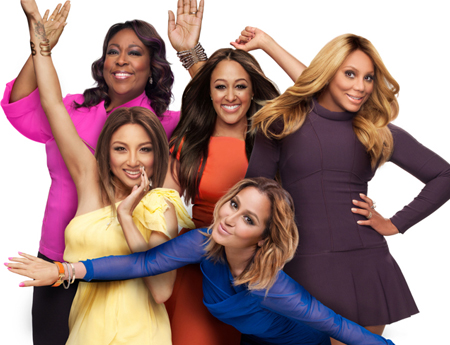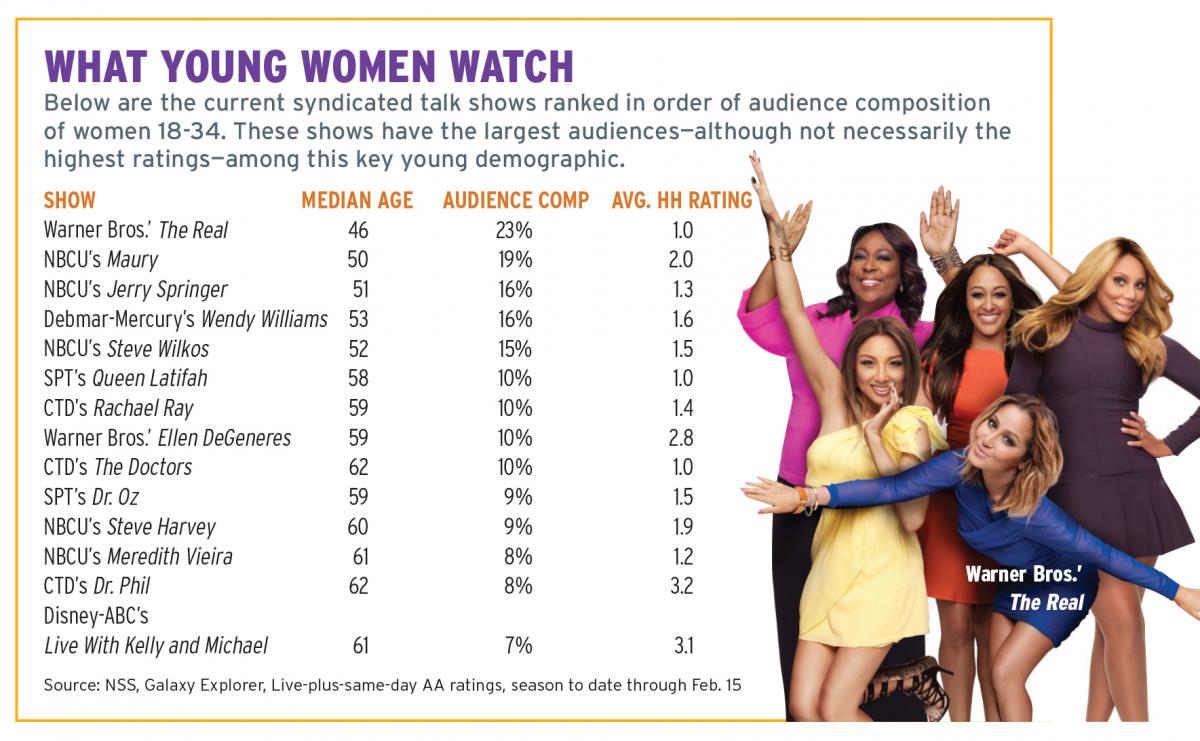Series Find Millennials Where They Live

Syndication—whether in daytime, access or late-fringe— tends to be watched by older viewers, but the sheer size and buying power of the millennial demographic means they are a group that syndicators and TV stations can’t afford to ignore.
“Millennials are the largest generation out there and they have the most purchasing power,” says Michael Teicher, executive VP media sales, Twentieth Television.
And many suggest it’s best to reach the demo where it lives most—on Facebook, Twitter and elsewhere. “The most important thing for that audience is to reach them via social media,” says Stephen Brown, Fox Television Stations executive VP, programming and development.
Most syndicated shows skew 50-plus, with off-net sitcoms—and particularly animated sitcoms—skewing by far the youngest. A few talk shows appeal to the younger set, including Warner Bros.’ The Real, Debmar-Mercury’s Wendy Williams and NBCUniversal’s conflict talkers Maury, Jerry Springer and Steve Wilkos.
The household talk leaders—CBS Television Distribution’s Dr. Phil, Disney-ABC’s Live With Kelly and Michael and Warner Bros.’ Ellen DeGeneres—all tend to be watched by older audiences, with Phil’s median age 61.6, Live’s 61.1 and Ellen’s 59.4, marking a fouryear jump this year from last. The conflict talkers all come in about ten years younger, while The Real is by far the youngest talker with a median age of 46.4.
“We’re always looking to do balanced shows that attract audiences that span the 18-54 demographics,” says Ken Werner, president of Warner Bros. Domestic Television Distribution.
While syndicators are working to attract younger audiences, there are certain realities that must be faced—younger people tend not to be available to watch daytime TV, and if they are, they aren’t watching it in the same way their parents did, while it’s older people who are available to watch in daytime.
Broadcasting & Cable Newsletter
The smarter way to stay on top of broadcasting and cable industry. Sign up below
“We aren’t looking to be young, but balanced. Otherwise, you end up alienating your existing audience,” says Werner.
Wendy Williams is a good example of that. Now in its sixth season, Wendy broke the 2.0 household barrier in the week ended Feb. 22 to hit a series high. Compared to last year, Wendy is up 14% in households, 11% among women 18-49 and 9% among women 25-54. Interestingly, though, the show is down 13% among younger women 18-34.

Part of Wendy’s appeal is her authenticity, something to which millennials in particular seem to respond. “Does it get any more authentic than Wendy?” says Teicher, who heads ad sales for both Twentieth and Debmar-Mercury’s produced and distributed programs. “She’s relatable, real and she doesn’t take herself too seriously.”
All of the entertainment mags are active on social media, but Twentieth’s Dish Nation and Warner Bros.’ TMZ are the youngest, with median ages of 47.9 and 48.1, respectively. Trifecta’s OK! TV, averaging a 0.2 in households season to date, is the third-youngest-skewing magazine with a median age of 53.2.
What these younger shows have in common are robust presences on social media that keep fans constantly engaged. For example, during the Grammys, Dish Nation followed singer Austin Mahone on the red carpet, live-tweeting his actions. Those tweets were retweeted frequently by Mahone’s followers, pushing traffic to Dish Nation’s website and raising awareness about the show.
Dish Nation’s talent, which are drive-time radio disc jockeys from around the country, also tweet and post on social media during pop-culture events, such as Wednesday night airings of Fox’s new hit, Empire.
“That’s how we reach a new younger audience,” says Brown. “We develop relationships with YouTube stars, Vine stars and other young artists and do Web exclusives with them that we can put on Dish Nation and elsewhere.”
Contributing editor Paige Albiniak has been covering the business of television for more than 25 years. She is a longtime contributor to Next TV, Broadcasting + Cable and Multichannel News. She concurrently serves as editorial director for The Global Entertainment Marketing Academy of Arts & Sciences (G.E.M.A.). She has written for such publications as TVNewsCheck, The New York Post, Variety, CBS Watch and more. Albiniak was B+C’s Los Angeles bureau chief from September 2002 to 2004, and an associate editor covering Congress and lobbying for the magazine in Washington, D.C., from January 1997 - September 2002.

